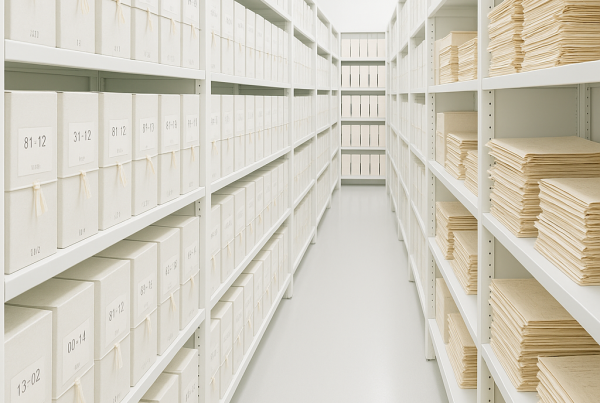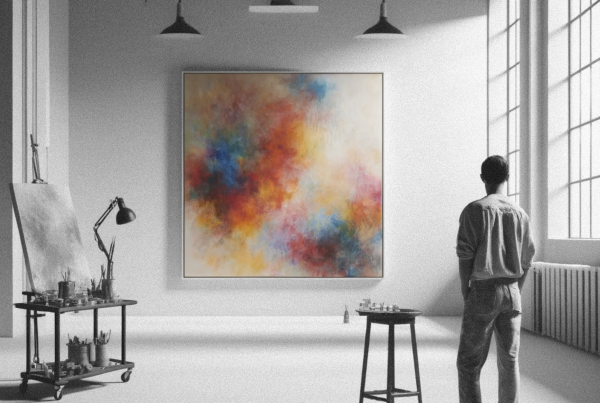The Truth About Metal Prints: What the Industry Isn’t Telling You
If you’ve ever been told that your metal print will “last 65 years,” you’re not alone. This bold claim is everywhere—backed by big names, supported by ‘lab results’, and repeated by photo labs and printing companies across the country.
But is it true?
As a professional fine art printing studio, we’ve seen firsthand how dye-sublimation metal prints hold up in the real world. Spoiler: it’s not always pretty. In this post, we’ll break down the basic science, the marketing spin, and what artists and photographers should actually expect from their metal prints.
What Are Metal Prints, Really?
When people talk about “metal prints,” they’re usually referring to dye-sublimation prints on coated aluminum—most commonly Chromaluxe panels.
Here’s how it works: a digital image is printed using dye-based inks onto a transfer sheet. That image is then heat-pressed onto an aluminum panel coated with a special polyester layer. The heat causes the dyes to vaporize and bond with the coating. The result? A sleek, vibrant, high-gloss image with intense color and contrast.
These prints are marketed as:
– Museum quality
– Archival
– Fade-resistant for 65+ years
Where the “65-Year” Claim Comes From
The figure comes from Wilhelm Imaging Research, a respected independent lab that tests image permanence. According to their report, Chromaluxe panels printed with dye-sublimation inks can last up to 65 years—under accelerated indoor lighting conditions.
Specifically:
– 240 lux lighting for 12 hours/day
– 25°C (77°F) and 60% relative humidity
– No exposure to sunlight, ozone, or pollutants
In other words: a perfectly controlled environment that most homes, galleries, or studios don’t offer.
So, yes—the 65-year claim is technically supported. But is it relevant to the real world? That’s another story.
Why the Lab Doesn’t Match Reality
In our experience, dye-sublimation metal prints definitely do not last decades—at least not without visible degradation. We’ve personally had prints in our own flat file archives show considerable degradation over the course of just a few years… drawer closed, in a flat files. It was for this reason, and many others, that we went as far as liquidating all of our dye sublimation equipment, even simply giving some of it away. We made a firm decision that we wanted no part of this problematic medium. Selling it with a straight face was just not something wanted to keep doing. We’ve heard countless stories from photographers and artists who have had sublimation prints on walls for just a few years, showing blacks that are washed out, color balance has shifted, or visible yellowing.
Why does this happen?
The Science:
– Dye-based inks (used in sublimation) are less chemically stable than pigment-based inks.
– Dyes are highly sensitive to UV light, air pollutants, and ozone.
– Over time, these factors break down the dyes, causing color fading and shifts—especially in blacks and shadow areas.
Common Degradation Characteristics Observed Over Time:
– Blacks turning brown, purple, or greenish — loss of true density and neutral tone.
– General color fade, particularly in warm tones like reds, oranges, and yellows.
– Shadow detail loss — subtle gradations get crushed or muddy.
– Midtones flatten — images lose dimensionality and depth.
– Increased yellow cast — due to dye instability and potential resin discoloration in the coating.
– Surface clouding or hazing in some environmental conditions.
– Coating microcracks or delamination in high humidity or heat.
– Dulling of gloss — prints lose the sharp, vibrant sheen they once had.
– Non-uniform fading — areas exposed to more light degrade faster, creating an uneven appearance.
Pigmented UV Printing: A Longer-Lasting Alternative
At our studio, we often print directly onto aluminum or other rigid materials using a SwissQprint Nyala printer, a high-end UV flatbed printer that uses pigment-based UV-cured inks.
This method offers several advantages over dye-sublimation:
– Superior lightfastness
– Rich, dense blacks that don’t fade
– More durable surface
– Greater flexibility in finishes and textures
These inks are cured instantly with UV light and are designed to resist environmental wear, making them ideal for both indoor and outdoor applications.
While no print process is immune to time, UV-cured pigmented prints have been tested to last 75–100+ years indoors, and up to 10 years outdoors without significant fading.
So Why Does the “65-Year” Myth Persist?
It comes down to two things: economics and marketing.
Labs and print companies built around dye-sublimation workflows have a vested interest in maintaining the perception that these prints are “archival.” Chromaluxe and other coating manufacturers point to Wilhelm’s lab results, and those results are repeated—often without context—by resellers.
The problem? Most artists and photographers don’t know to question it. They hear “archival” and assume their work is safe for decades. Unfortunately, that’s not always true.
What Artists & Collectors Should Know
If you care about the longevity of your work—and your reputation—here’s what to ask your printer:
– What ink system is being used?
– Is the panel dye-based or pigment-based?
– Has the product been tested in real-world conditions?
– What are the results over time, not just in a controlled lab?
Also: trust your eyes. If you’ve seen metal prints fade or yellow over time, you’re not imagining it.
Final Thoughts & Conclusion
We’re not saying dye-sublimation prints are worthless. In the right context—short-term display, commercial decor, or situations where the short term aesthetic more important than archival longevity—they’re a valid choice.
But if you’re creating work that’s meant to last for generations, be skeptical of marketing that oversells longevity. Ask the hard questions. Test your materials. And remember: “archival” is a marketing promise, not a fact—until it’s been proven over time.


